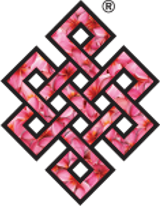Treemoss (Reconstitution)
Description
Tree Moss, the plants of the genus Climacium (order Bryales), which resemble small evergreen trees and are found in damp, shady places throughout the Northern Hemisphere. The most common species are the European tree moss (C. dendroides), which is also found in North America, and the American tree moss (C. americanum). Both are about 5 to 10 centimetres (2 to 4 inches) high, with the branches clustered at the top of the shoot. The reddish-brown capsules (spore cases), borne on the female plant, have lids with long beaks and mature in the fall. The American tree moss has longer, narrower capsules with longer beaks and a leaf different from that of the European tree moss. Both species produce new shoots vegetatively each year from horizontal stems growing on the soil surface.
A less common North American species, C. kindbergii, can be found growing in very wet, swampy places. It is very dark green, almost black, in colour, and its tendency to form dense tufts or cushions obscures the treelike appearance of the small individual plants..Usnea is the generic and scientific name for several species of lichen in the family Parmeliaceae, that generally grow hanging from tree branches, resembling grey or greenish hair. It is sometimes referred to commonly as Old Man's Beard, Beard Lichen, Tree's Dandruff, Woman's Long Hair, or Tree Moss. It should not be confused with Oak Moss (genus Evernia), which it physically resembles and is also called Tree Moss.Usnea grows all over the world.
Like other lichens it is a symbiosis of a fungus and an alga. The fungus belongs to the division Ascomycota, while the alga is a member of the division Chlorophyta.As a fruticose lichen, Usnea appears as a shrub-like growth on host trees. It reproduces via vegetative means through fragmentation, asexual means through soredia, or sexual means through ascogonium and spermatogonium.The growth rate of lichens in nature is slow, but the growth rate has been sped up in laboratory conditions where Usnea is being cultured. Usnea looks very similar to Spanish moss, so much so that the latter plant's Latin name is derived from it.
Many of these are now regarded as morphological varieties and adaptations to local circumstances. The taxonomic categorization of many members of this genus remains uncertain. The number of recognized species in Finland is decreasing for this reason, from 34 in 1951 to 25 in 1963 and only 12 in 2000. It is now noted as including more than 600 species and being one of the largest genera within the Parmeliaceae.The species Usnea longissima was renamed Dolichousnea longissima in 2004.Like other lichens, Usnea often grows on sick or dying trees due to the pre-existing loss of canopy leaves, allowing for greater photosynthesis by the lichen's algae.
Under bad conditions they may grow no larger than a few millimetres, if they survive at all. Where the air is unpolluted, they can grow to 10–20 cm long. Usnea has been used as an antibiotic for gram-positive bacteria, and as an antifungal against Candida albicans. There are no human clinical trials to either support or refute either practice, although in vitro research does strongly support Usnea's antimicrobial properties.Usnea species have been used to create orange, yellow, green, blue and purple dyes for textiles.Usnea barbata has been used in cosmetic production for its antimicrobial and antifungal properties as a preservative and deodorant.

